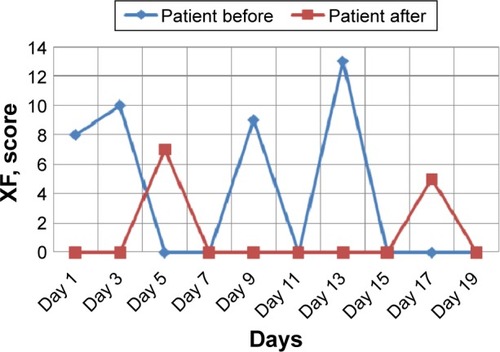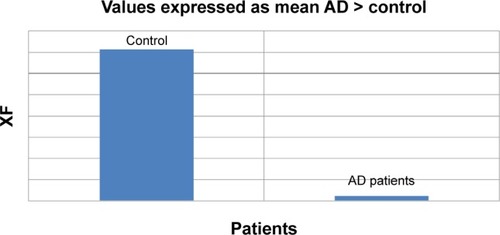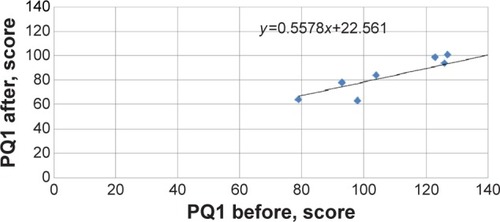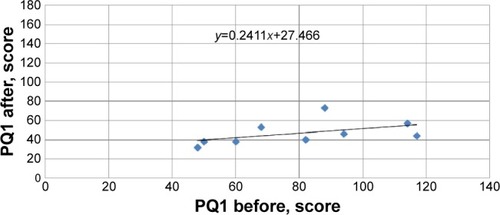Figures & data
Table 1 Clinical and neuropsychological characteristics of AD patient groups in this study
Table 2 The performance of AD patients on the tests of cognition, PQ1B and PQ1A, the difference between PQ1 before and PQ2 before (DΔ before), and the difference between PQ1 after and PQ2 after (DΔ after) and on the writing test before and after
Figure 1 An example of an eldest aged patient.
Abbreviation: XF, sentences/minutes.

Figure 5 XF by AD patients and healthy controls expressed as mean ± SD in the graphia test, summated over all 12 days of testing.




